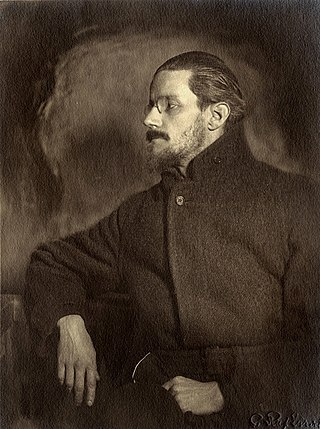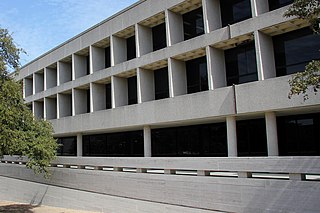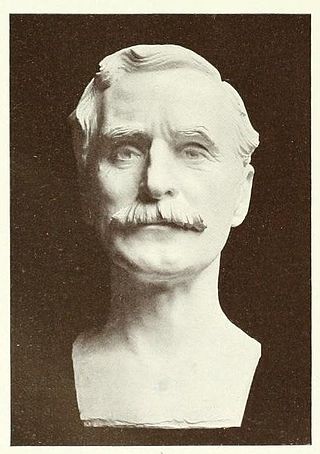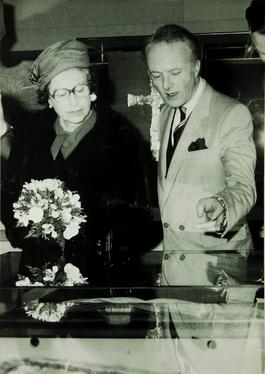
James Augustine Aloysius Joyce was an Irish novelist, poet, and literary critic. He contributed to the modernist avant-garde movement and is regarded as one of the most influential and important writers of the 20th century. Joyce's novel Ulysses (1922) is a landmark in which the episodes of Homer's Odyssey are paralleled in a variety of literary styles, particularly stream of consciousness. Other well-known works are the short-story collection Dubliners (1914), and the novels A Portrait of the Artist as a Young Man (1916) and Finnegans Wake (1939). His other writings include three books of poetry, a play, letters, and occasional journalism.

East Florida was a colony of Great Britain from 1763 to 1783 and a province of Spanish Florida from 1783 to 1821. Great Britain gained control of the long-established Spanish colony of La Florida in 1763 as part of the treaty ending the French and Indian War. Deciding that the territory was too large to administer as a single unit, Britain divided Florida into two colonies separated by the Apalachicola River: East Florida with its capital in St. Augustine and West Florida with its capital in Pensacola. East Florida was much larger and comprised the bulk of the former Spanish territory of Florida and most of the current state of Florida. It had also been the most populated region of Spanish Florida, but before control was transferred to Britain, most residents – including virtually everyone in St. Augustine – left the territory, with most migrating to Cuba.

Mankind Quarterly is a peer-reviewed journal that has been described as a "cornerstone of the scientific racism establishment", a "white supremacist journal", and "a pseudo-scholarly outlet for promoting racial inequality". It covers physical and cultural anthropology, including human evolution, intelligence, ethnography, linguistics, mythology, archaeology, and biology. It is published by the Ulster Institute for Social Research, which is presided over by Richard Lynn.

Lawrence Henry Gipson was an American historian, who won the 1950 Bancroft Prize and the 1962 Pulitzer Prize for History for volumes of his magnum opus, the fifteen-volume history of "The British Empire Before the American Revolution", published 1936–70. He was a leader of the "Imperial school" of historians who studied the British Empire from the perspective of London, and generally praised the administrative efficiency and political fairness of the Empire.

Martin Litchfield West, was a British philologist and classical scholar. In recognition of his contribution to scholarship, he was awarded the Order of Merit in 2014.

Rupert Leo Scott Bruce-Mitford, FBA, FSA was a British archaeologist and scholar, best known for his multi-volume publication on the Sutton Hoo ship burial. He was a noted academic as the Slade Professor of Fine Art at Cambridge University from 1978 to 1979, in addition to appointments at All Souls College, Oxford, and Emmanuel College, Cambridge.
The Renaissance Society of America (RSA) is an academic association founded in 1954 supporting the study of the Renaissance period, 1300–1650. The RSA brings together scholars from many backgrounds in a wide variety of disciplines from North America and around the world. RSA has over 5,000 members at universities and colleges as professors, instructors, and graduate students; at museums, libraries, and other cultural institutions; independent scholars; and many others interested in Renaissance studies. Its headquarters are in New York City; the annual meeting takes place in changing cities within North America and in Europe.
The William and Mary Quarterly is a quarterly history journal published by the Omohundro Institute of Early American History and Culture. The journal originated in 1892, making it one of the oldest scholarly journals in the United States. Currently in its third series, the Quarterly is the leading journal for the study of early American history and culture. It ranges chronologically from Old World–New World contacts to about 1820. Geographically, it focuses on North America—from New France and the Spanish American borderlands to British America and the Caribbean—and extends to Europe and West Africa. Though grounded in history, it welcomes works from all disciplines bearing on the early American period—for example, literature, law, political science, anthropology, archaeology, material culture, cultural studies.
The International & Comparative Law Quarterly is a law review published quarterly by the British Institute of International and Comparative Law. It was established in 1952 and covers comparative law as well as public and private international law, including human rights, war crimes, and genocide, World Trade Organization law and investment treaty arbitration, recent developments of international courts and tribunals, as well as comparative public and private law all over the world. In addition to longer articles, the journal publishes book reviews. The editor-in-chief is Malcolm Evans and the Managing Editor is Anthony Wenton.

The Dolph Briscoe Center for American History is an organized research unit and public service component of the University of Texas at Austin named for Dolph Briscoe, the 41st governor of Texas. The center collects and preserves documents and artifacts of key themes in Texas and United States history and makes the items available to researchers. The center also has permanent, touring, and online exhibits available to the public. The center's divisions include Research and Collections, the Sam Rayburn Museum, the Briscoe-Garner Museum, and Winedale.

Sir Charles Hercules Read was a British archaeologist and curator who became Keeper of British and Mediaeval Antiquities and Ethnography at the British Museum, and President of the Society of Antiquaries of London, following his mentor Augustus Wollaston Franks in the first position in 1896, and in the second from 1908 to 1914 and again from 1919 to 1924, after being Secretary since 1892. He began periods as President of the Royal Anthropological Institute of Great Britain and Ireland in 1899 and 1917. He was knighted in 1912 and retired from the British Museum in 1921. He usually dropped the "Charles" in his name, especially after he was knighted, though not consistently. "A man of handsome and even striking appearance", he was a major figure in British museum curation in his day, though he published relatively little.

James Edward Oglethorpe was a British soldier, Member of Parliament, and philanthropist, as well as the founder of the colony of Georgia in what was then British America. As a social reformer, he hoped to resettle Britain's "worthy poor" in the New World, initially focusing on those in debtors' prisons.
John Allan, was a British numismatist and scholar of Sanskrit. Allan was a noted numismatist and produced the first systematic study of the coins the Gupta Empire, which remains a standard reference today.

Nigel Reuben Rook Williams was an English conservator and expert on the restoration of ceramics and glass. From 1961 until his death he worked at the British Museum, where he became the Chief Conservator of Ceramics and Glass in 1983. There his work included the successful restorations of the Sutton Hoo helmet and the Portland Vase.
Italy is the home of two of the world's biggest publishers of books in terms of revenue: Messaggerie Italiane and Mondadori Libri. Other large publishers include De Agostini Editore, Feltrinelli and the RCS MediaGroup.

Derek Howard Turner was an English museum curator and art historian who specialised in liturgical studies and illuminated manuscripts. He worked at the British Museum and the British Library from 1956 until his death, focusing on exhibitions, scholarship, and loans.
Karl Watts Gransden was a British poet and an editor, translator, scholar, and teacher of Latin and English literature. He spent his career at the British Museum and the University of Warwick.

The Silva Gadelica are two volumes of medieval tales taken from Irish folklore, translated into modern English by Standish Hayes O'Grady and published in 1892. The volumes contain many stories that together comprise the Fenian Cycle.
Ailsa McGown Clark (1926–2014) was a British zoologist, who principally studied echinoderms and was a specialist on asteroidea. She worked at the Natural History Museum for most of her career.











